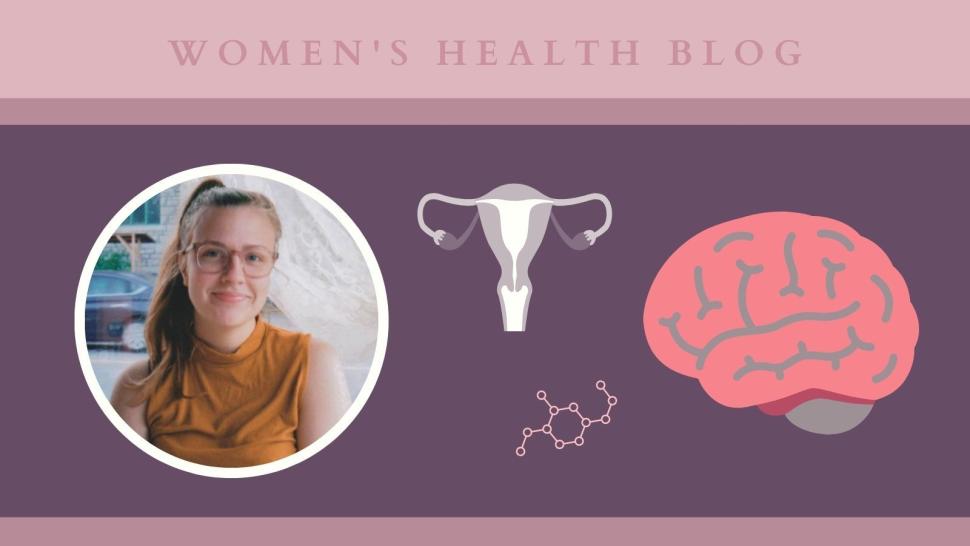Interviewee: Alana Brown, Ph.D. Candidate, University of Toronto, Authors/Editors: Romina Garcia de leon, Shayda Swann (Blog Co-coordinators).
Published: July 14th, 2023
Could you tell us about your research?
In Dr. Gillian Einstein’s Lab of Cognitive Neuroscience, Gender, and Health, my PhD work explores the relationships between ovarian hormones (e.g., 17β-estradiol) and cognition, specifically in women with breast cancer gene mutations who opt to have bilateral salpingo-oophorectomy, which is the removal of both ovaries and fallopian tubes. This surgery usually occurs for cancer prevention purposes around 10 years prior to the typical age of spontaneous/natural menopause (~51 years). Bilateral salpingo-oophorectomy results in an abrupt and early loss of ovarian hormones. Our group in Dr. Einstein’s lab is trying to understand the cognitive impact of this hormone loss, especially given that oophorectomy is associated with an increased risk of developing Alzheimer's disease (AD) in later life.
What drove you to study women’s health research?
There is a dearth of research examining factors contributing to cognition among middle-aged women. The spontaneous menopause transition is a time period often defined by self-reported brain fog. So, women are specifying that their memory is changing during this period. Not only is there a gap in research to try to understand this change, but this is also a unique opportunity to answer more nuanced questions about memory in a healthy population. This research gap is even wider for women with bilateral salpingo-oophorectomy.
It is really interesting that we can ask richer questions about memory by looking at an ovarian hormone shift that affects a large number of people in the world. For example, how can the memory changes associated with ovarian hormone loss be differentiated from the memory changes associated with aging? How can we use ovarian hormone-related structural and functional brain changes to answer questions about how the brain supports memory more broadly? In the realm of neuroimaging, menopause and sex-specific factors are conflated with aging and largely overlooked and disregarded. It is very common to see neuroimaging research focusing on aging by studying groups of young adults who are 35 or younger and comparing them to groups of older adults who are 65 or older. The large gap between those age groups, representing midlife, during which menopause is typically occurring, is often ignored. There is a really small percentage of research looking at female-specific outcomes during that time.
What impact do you hope to see with this work?
I hope that this work can contribute to a larger picture of precision medicine. Given that we are studying a group of women who are at increased risk for AD, there may be implications for AD biomarkers. Female-specific AD risk factors must be studied and clarified. I hope this work can contribute to a larger body of research focused on studying people and the complexities of their lives while integrating that complexity into neuroimaging. Further, I hope we know more about the functional effects of reproductive aging and/or ovarian hormone loss in the future, above and beyond the effects of aging. This is new territory for neuroimaging. Those considering bilateral salpingo-oophorectomy deserve to be fully informed and aware of what they may experience after the surgery.
Have you seen any interesting findings yet in your research?
We are finding that oophorectomy without 17β-estradiol replacement therapy is associated with decreased hippocampal activation, specifically while learning/encoding during a face-name pair memory paradigm that is thought to be sensitive to AD progression. The hippocampus is a brain area critical for learning/memory and is also among the first regions affected by AD. We do not see the same pattern in individuals with oophorectomy who are taking 17β-estradiol replacement therapy. It is possible that 17β-estradiol has a role in maintaining function in the hippocampus and potential markers of AD risk could be detected in midlife.
Where can people find more about your work?
Twitter: @4alanabrown and @EinsteinLabUofT,
Online: https://einsteinlab.ca
LinkedIn: https://www.linkedin.com/in/alana-brown-23544a111/
Check out this recent publication by Alana and the Einstein Lab on how midlife ovarian removal affects cognition!
